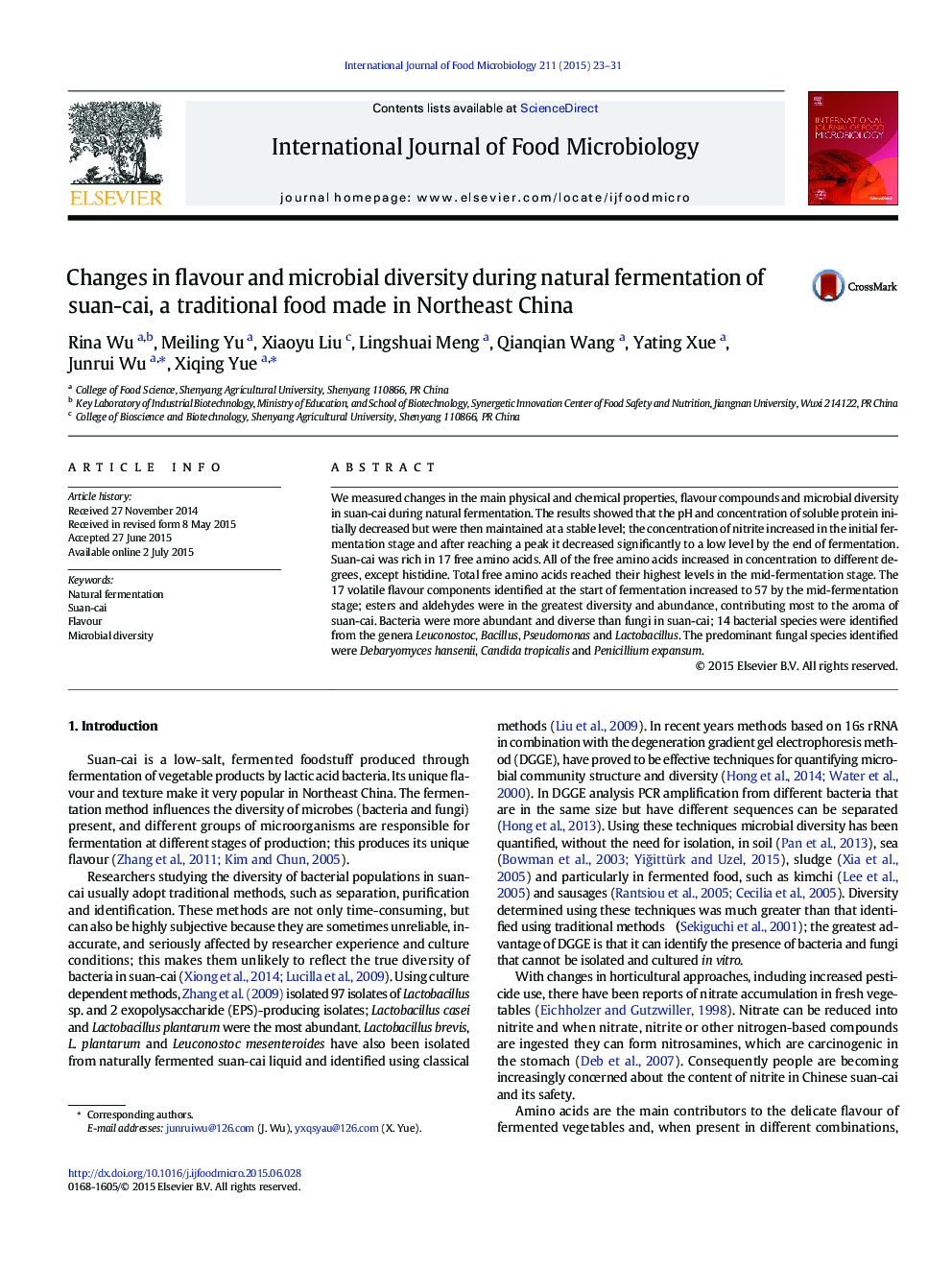| Article ID | Journal | Published Year | Pages | File Type |
|---|---|---|---|---|
| 4366508 | International Journal of Food Microbiology | 2015 | 9 Pages |
•pH, soluble protein and nitrite levels all decreased in suan-cai during fermentation.•With the exception of histidine, amino acid concentrations increased during fermentation.•Seventeen volatile flavour components were detected and their concentrations varied during fermentation.•PCR–DGGE demonstrated greater microbial diversity in suan-cai during fermentation than traditional methods.•Relationships between changes in flavour of suan-cai and microbial diversity were defined.
We measured changes in the main physical and chemical properties, flavour compounds and microbial diversity in suan-cai during natural fermentation. The results showed that the pH and concentration of soluble protein initially decreased but were then maintained at a stable level; the concentration of nitrite increased in the initial fermentation stage and after reaching a peak it decreased significantly to a low level by the end of fermentation. Suan-cai was rich in 17 free amino acids. All of the free amino acids increased in concentration to different degrees, except histidine. Total free amino acids reached their highest levels in the mid-fermentation stage. The 17 volatile flavour components identified at the start of fermentation increased to 57 by the mid-fermentation stage; esters and aldehydes were in the greatest diversity and abundance, contributing most to the aroma of suan-cai. Bacteria were more abundant and diverse than fungi in suan-cai; 14 bacterial species were identified from the genera Leuconostoc, Bacillus, Pseudomonas and Lactobacillus. The predominant fungal species identified were Debaryomyces hansenii, Candida tropicalis and Penicillium expansum.
